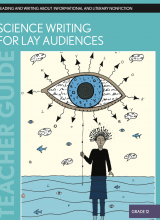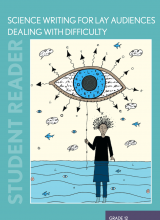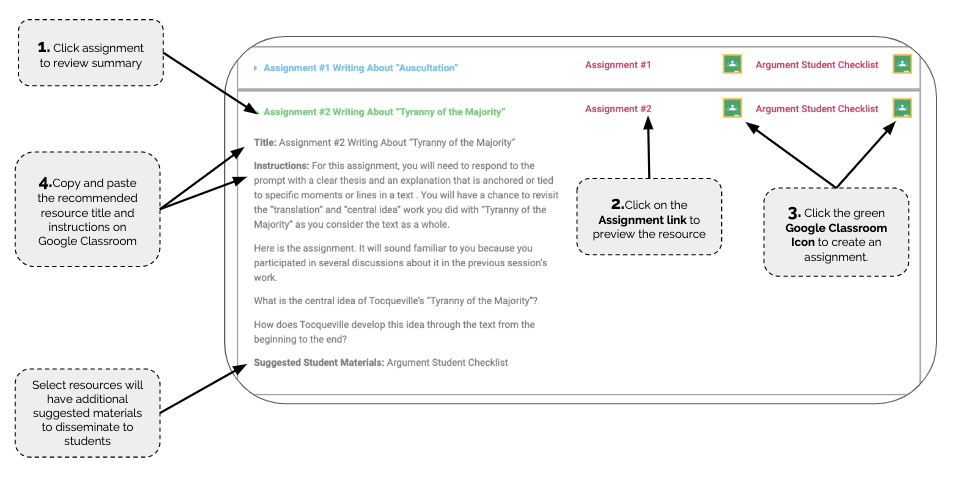Science Writing for Lay Audiences - Grade 12
Science Writing for Lay Audiences consists of two cycles of work, each focused on a single text. Both texts are examples of science writing composed for a general audience. The goal of the unit is not only to read and understand these two texts, but also to uncover the strategies and methods authors use to reach readers who are unfamiliar with scientific topics and the concepts they describe.


Table of Contents
Writing Tasks
Title: “Malaria: Stopping a Global Killer” Unfamiliar Terms and Confusing Moments
Teacher Manual Instructions:
Session 1
Give students a moment to individually skim back through the text, examine words and moments they marked during the first read, and mark any additional parts that stand out to them as being confusing or difficult.
Then, ask students to return to their small groups. As they work, students should share their initial markings with each other and review other portions of the text for additional ideas. Encourage students to use each other as a resource for simple questions and to build a list that contains the most significant or challenging difficulties they’ve identified. Give the groups 5-7 minutes to work on the first two columns of their chart.
Title: Writing Like Finkel
Teacher Manual Instructions:
Session 5
Review the “Analyzing Finkel’s Methods” chart with an eye on this task. Answer any questions students have about the task and then tell them they will have the work period to complete the write-like work. You may wish to model an example of how this might work: “In my first quick write, maybe I wrote something like, ‘The parasite is always changing.’ But now I’m thinking about how Finkel used metaphors and similes, and I’m trying to think of how I could use something there that would illustrate for the reader just how much the parasite changes. What would be some comparisons I could use?”
Title: “The Power of Nothing” Unfamiliar Terms and Confusing Moments
Teacher Manual Instructions:
Session 6
Give students a moment to individually skim back through the text, examine words and moments they marked during the first read, and mark any additional parts that stand out to them as being confusing or difficult.
Then, ask students to return to their small groups. As they work, students should share their initial markings with each other and review other portions of the text for additional ideas. Encourage students to use each other as a resource for simple questions and to build a list that contains the most significant or challenging difficulties they’ve identified. Give the groups 7-8 minutes to work on the first two columns of their chart.
Title: Explaining Key Content in “The Power of Nothing”
Teacher Manual Instructions:
Session 8
For this assignment, you will write a 1- to 2-page paper that explains Specter’s key ideas in his essay “The Power of Nothing.” Here is your task:
In “The Power of Nothing,” the attitude toward placebos in the scientific community is more complicated than simply being for or against studying and using placebos to treat patients. Explain the key issues related to the study and use of placebos for an audience that is unfamiliar with the subject. Be sure to use textual evidence to support your response. |
Suggested Student Materials: Informational_Explanatory Checklist
Title: Comparing and Contrasting Two Authors’ Methods
Teacher Manual Instructions:
Session 11
During the previous sessions, you worked hard to identify and analyze the methods that Finkel and Specter use to engage their readers and help them understand some fairly complex content . Your task will be to compare and contrast the approaches these authors take in order to determine which article you find to be more compelling.
Here’s the assignment:
Both Finkel and Specter write about scientific subjects for non-scientist audiences . Write a 2-page essay where you compare and explain the approaches the two authors take . What’s similar about their methods? What’s different about them? Which article do you find more compelling? Why? Be sure to cite evidence and examples from both texts to support your ideas . |
Suggested Student Materials: Informational_Explanatory Checklist
Charts for Discussion
Title: What We Learned From Reading “Malaria: Stopping a Global Killer”
Teacher Manual Instructions:
Session 1
Facilitate a short whole-group share where the class collaborates to create a master list of this information. To create this master list, call on students to share what they learned from reading this text. Students should point to places in the text to support their responses. Capture student responses on a chart titled “What We Learned From Reading ‘Malaria: Stopping a Global Killer.’” Tell students since this is only their first read, and because they will be given multiple opportunities to reread this text, the intent is just to capture the gist of what they learned. It’s important to note that the pace of this “what we learned” activity is brisk and not at all comprehensive. This is a working chart that will be added to in the upcoming sessions.
Title: “Malaria” Metaphors and Similes
Teacher Manual Instructions:
Session 4
Create a three-column chart like the one below and ask students to create a similar chart in their notebooks. Title the chart “Malaria: Metaphors and Similes.”
Reconvene the whole group and work with the class to create entries for the examples of metaphor and simile students identified with their partners.
Title: Analyzing Finkel’s Methods
Teacher Manual Instructions:
Session 4
To scaffold this work, consider displaying the first few pages of Finkel’s article for the class to see and then work, as a whole group, to mark, label, and reflect on examples of other methods Finkel uses in those first pages. Capture that information on a chart structured like the one below. Title the chart “Analyzing Finkel’s Methods.” Ask students to create a similar chart in their notebook and record the class’s findings on it.
Title: What We Learned From Reading “The Power of Nothing”
Teacher Manual Instructions:
Session 6
Facilitate a short whole-group share where the class collaborates to create a master list of this information. To create this master list, call on students to share what they learned from reading this text. Students should point to places in the text to support their responses. Capture student responses on a chart titled “What We Learned From Reading ‘The Power of Nothing.’” Tell students since this is only their first read, and because they will be given multiple opportunities to reread this text, the intent is just to capture the gist of what they learned. It’s important to note that the pace of this “what we learned” activity is brisk and not at all comprehensive. This is a working chart that will be added to in the upcoming sessions. Allow students a few extra minutes to record any additional insights from the master list into their own notebook.
Title: Analyzing Specter’s Methods
Teacher Manual Instructions:
Session 10
To scaffold this work, consider displaying the first few pages of Finkel’s article for the class to see and then work, as a whole group, to mark, label, and reflect on examples of other methods Finkel uses in those first pages. Capture that information on a chart structured like the one below. Title the chart “Analyzing Specter’s Methods.” Ask students to create a similar chart in their notebook and record the class’s findings on it.
Checks for Understanding
Title: “Malaria: Stopping a Global Killer” Unfamiliar Terms and Confusing Moments
Teacher Manual Instructions:
Session 1
Reconvene the class and facilitate a whole-group share where the class collaborates to create the first two columns of the whole-class version of “‘Malaria: Stopping a Global Killer’: Unfamiliar Terms and Confusing Moments” chart.
To create this master chart, call on students to share the unfamiliar terms and confusing moments from their group list. Capture these in column one of the class chart. Be sure to include line numbers for each term or moment in the first column.
As students share their terms and moments, be sure to identify why the moment is difficult, especially if it is more than a simple question of vocabulary. Did the writer make a confusing comparison? Did he refer to an idea that you aren’t familiar with? Record these explanations in column two.
Tell students that the list of difficult moments they’ve created in their notebook might differ slightly from the master list they’ve created together as a class. Encourage students to record additional entries in their notebooks that they might have missed when they were working in their small groups. Let students know it is not necessary for them to record these additional entries in their notebook if they do not find the terms or moments offered by their peers to be difficult, confusing, or unclear.
Title: What We Learned About Identifying and Resolving Unfamiliar Terms or Difficult Moments
Teacher Manual Instructions:
Session 1
After the class has built a list of strategies for resolving difficulties, return to the list of moments from the text. Item by item, confirm that your list of strategies will provide a solution. If you come across a difficulty that does not yet have a possible solution, brainstorm ideas and add them to the list of strategies.
Finally, have students turn and talk to a partner about what they learned about the process of identifying unfamiliar terms or confusing moments. Ask a few students to share. Be sure to capture responses on a new chart titled “What We Learned About Identifying and Resolving Unfamiliar Terms or Difficult Moments.”
Title: “The Power of Nothing” Unfamiliar Terms and Confusing Moments
Teacher Manual Instructions:
Session 6
Reconvene the class and facilitate a whole-group share where the class collaborates to create the first two columns of the class chart titled “‘The Power of Nothing’: Unfamiliar Terms and Confusing Moments.”
To create this master chart, call on students to share the unfamiliar terms and confusing moments from their group list. Capture these in column one of the class chart. Be sure to include line numbers for each term or moment in the first column.
As students share their terms and moments, be sure to identify why the moment is difficult, especially if it is more than a simple question of vocabulary. Did the writer make a confusing comparison? Did he refer to an idea that you aren’t familiar with? Record these explanations in column two.
Tell students that the list of difficult moments they’ve created in their notebook might differ slightly from the master list they’ve created together as a class. Encourage students to record additional entries in their notebooks that they might have missed when they were working in their small groups. Let students know it is not necessary for them to record these additional entries in their notebook if they do not find the terms or moments offered by their peers to be difficult, confusing, or unclear.
Title: Key Ideas About Placebos
Teacher Manual Instructions:
Session 8
Check for understanding: In addition to facilitating this conversation, work hard to capture and distill the major ideas that students are developing on
a chart titled “Key Ideas About Placebos.” Push students to help you build text-based explanations to support them. This will ensure that students get a glimpse of what it looks like when someone builds a text-based explanation.
Independent Reading
Title: Book Interview
Instructions:
Display a copy of the “Book Interview” sheet for the class to see and distribute copies to students.
Using one of the books from the classroom library, model for students how to interview a book and how to fill out the sheet. Answer any questions students have about the form and its terminology.
Give students time to interview three books and to enter their findings on the “Book Interview” sheet.
Title: Book Pass
Instructions:
Organize students’ desks into a circle (or, if this is not possible, determine a very clear path for books to pass through the group).
Explain the purpose of a book pass:
A book pass is another way to expose students to the texts available in the classroom library. A book pass requires students to use their book interviewing skills. A book pass is a chance for students to find titles to add to their “Books I’d Like to Read” list.
Display a copy of the “Book Pass” for the class to see and pass out copies to students.
Demonstrate for the class how a person goes about making an entry on the form. Since students will need to write quickly, show how an author can be listed just by last name and first initial, and demonstrate how a student can abbreviate a long title if necessary. What matters is that they have enough information to track down the book again later if they need to.
Give each student one book (or magazine). Tell them it doesn’t matter which text they start with, because they will see all—or at least many of—the books. (Be sure you have one title for each student in the circle.)
Choose a direction for passing.
After students receive a book, they should immediately record the author’s name (if the text is a book) and title on the “Book Pass” form.
Give students one minute to interview each book following the procedure established in the previous session.
At the end of one minute, call “pass.” At this time, students should make an entry in the comments column and pass the book to the next student.
Continue the book pass until each student has interviewed all the books.
Title: Book Recommendation
Instructions:
Distribute copies of the “Book Recommendation” form to students and give them time to craft or begin crafting their first review. Students can choose to write about a book they’ve completed recently or one they remember well from past reading.
Title: Goals for My Reading Life
Instructions:
Display a copy of “Goals for My Reading Life” for the class to see and distribute copies to students.
Use this time to review how to fill out the goals sheet. Be sure to show students how they can use the charts to generate ideas for answers to the “Goals” questions.
Take a moment to stress the value and function of the “Books I’d Like to Read” list. Point out that this list is a tool that serves the same function as a bedside table for some readers: It is a place to store up titles or books that are “next in line.” Remind the class that readers constantly have their eyes open for “next” texts. A “Books I’d Like to Read List” is a way to prevent aimless and unproductive castings around for new reading materials. It’s a planning tool.
Explain that at the beginning of each marking period, each student will fill out a new goals sheet; at at the end of each marking period, students will take a few minutes to review their goals statements and reflect on their efforts to meet them.
Answer any questions students have about the “Goals for My Reading Life” forms.
Give students time to complete the form and set a deadline for submission. You may decide to photocopy these to keep a set for yourself. Return the forms to students during the next session and have them attach the form to a page in their notebook or save it for their student portfolio (see Creating a Student Portfolio).
Title: Reading Log
Teacher Manual Instructions:
Show students how to set up a “Reading Log” in their notebook. They should be sure to enter it in their table of contents. You may decide to distribute sticky notes so that students can flag this page. Use the model on the next page to guide your efforts.
Notice the column titled “Date Completed/# of Pages Read.” This column is a place for students to record, and receive credit for, the reading of texts that did not require a “cover-to-cover” experience. Be sure to point out that reading sections of several texts for specific purposes is not the same as skipping aimlessly from book to book to book. The former often indicates purposefulness and interest; the latter can indicate confusion or disengagement.
After students have set up the reading log—including proper headings, creating the grid, etc.—demonstrate how to make an entry.
Answer any questions students have about the log.
Remind students that the reading log is a tool to be used in conjunction with the “Goals” sheets. Students track their reading in the log and then use the log to evaluate their progress toward their goals.
If you plan to use student portfolios this year, consider introducing them at this time using some version of the information in the section that follows. Review Creating a Student Portfolio in advance to be sure you have thought through some of the important questions for portfolio work.
Unit Resources
Title: Explaining Key Content in “The Power of Nothing”
Title: Comparing and Contrasting Two Authors’ Methods
Title: Grades 11 and 12 – Informational_Explanatory Rubric
Title: Scaffolds and Modifications: Descriptions and Use
